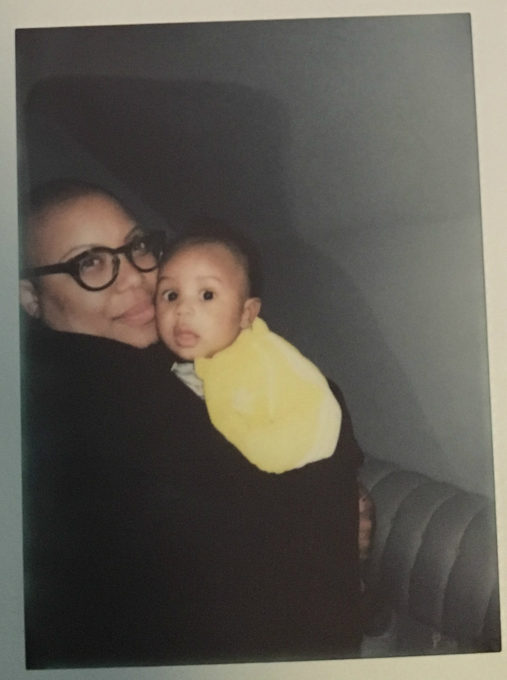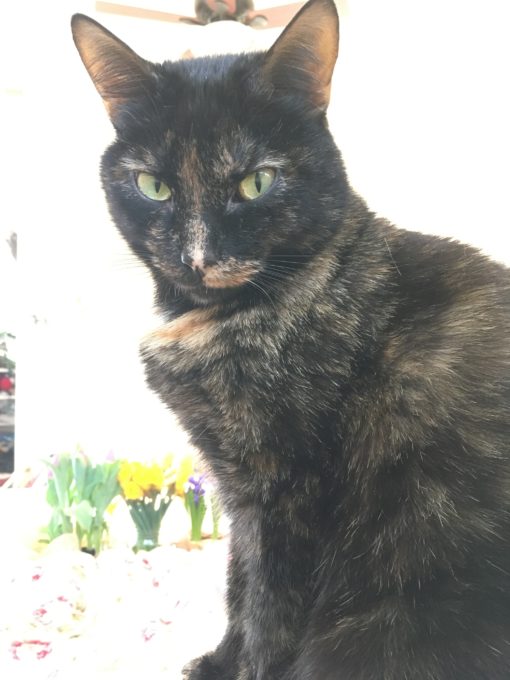As the Tzedek Fellow for Engagement and Operations at the Campaign for Southern Equality, Maya Washington has traveled throughout the South inviting folks to contribute their time, talent, and treasure to campaigns seeking justice for LGBTQ folks in the South. Early on, she developed and launched Shop for Equality, a fundraising effort in partnership with 31 local businesses.
Maya is an alchemist, transforming unimaginative rooms to wildly inclusive spaces. She brings a deeply intuitive sense of physical design and an unparalleled capacity to gauge the energy of a room to craft deeply welcoming spaces.
In her next role at Southerners on New Ground (SONG), Maya will serve as Operations Coordinator, ensuring that organizers have essential support. She will also be coordinating gatherings and convenings. Maya’s vibrancy and warmth invite folks to show up authentically with their entire beautiful selves.
Here, Maya talks with Heather Talley, Tzedek’s Co-Director of Social Justice Leadership and Community Engagement, about doing fundraising differently and inviting people into movement work.
Heather: You bring an expertise in event planning, a prowess for design, a commitment to accessibility, and sheer creativity to conceptualize and coordinate truly unique fundraising campaigns. Tell me about why development in the social justice sector matters to you, and why you think it’s essential to do fundraising differently.
Maya: For me, the first step to shifting the culture of fundraising is assessing what we have in community that may aid in moving us towards liberation. That means taking a deep dive into the relationships we have, our natural resources, our skills, and our access to money. When folks in marginalized communities are able to look at the vast inventory of resources that we have, it inspires us to move towards real change in our lifetime. If we meditate on the money that we don’t have, it leads to being disheartened by the big, scary job of getting that money. And to be real–the job of getting money is supposed to be scary! That’s the role of marginalization in capitalism: to remind us that we can’t have and will never be able to have access to money so that we don’t come looking for the small percentage of folks who hoard all of world’s monetary resources.
I believe that money is a resource that many of us have a deep, and complicated history with due to the trauma of capitalism. Those complications are one of the primary reasons why many revolutionary grassroots organizations end up stagnated in the work. I have also noticed that one of the main reasons why I don’t connect with bigger budget organizations that seem to have a healthier relationship with asking for money while doing transformative work is because they lack an element of creativity and warmth. The missing pieces of processing our money tough stuff and incorporating human-centered design into the nonprofit sector is was brought me to fundraising. The space to design a new way of being together in organizing is why I’ve stayed.
Heather: What out-of-the-box development strategies are you currently dreaming up?
Maya: Before I’m even thinking about development, I’m thinking about how to get members of an organization into a room to get real and on the same page about the heart of the work. The only way an organization can truly raise money is if everyone involved can envision themselves being able to ask for resources to fund the work. That means I want to get into what our dream life would be if the things that we are fighting against were suddenly gone.
I believe in using design to create momentary reflections of what we want for a truly liberated world. When we design, we are creating grounding, stability, and sustainability that is attainable in the present. I design space to encourage breath and creativity. That can look like making sure nature exists and is centered in the space every time we congregate. It can also manifest as meeting in spacious rooms that don’t require squeezing through aisles or bumping into chairs. When folks can move freely, they can think freely and when they can think freely, they can dream.
Social justice workers are society’s social designers and architects. I believe in creating space that nurtures that work. Creating intentional spaces to learn, play and strategize advances our shared humanity. Our spaces frame our work. As long as we build those spaces with compassion being the cornerstone of our design.
I am inspired by set designers, interior decorators and user experience designers. I take my cues from trends in the luxury world and bring those elements down to Earth. My vision is that folks from all walks of life get to experience their own personal idea of luxury and beauty. It’s simple, when you give a lot, you get a lot. It pays to treat people well.
Heather: What do the most welcoming movement spaces look like? What advice would you give to grassroots organizers who are longing to create beautiful, life-giving spaces?
Maya: The first thing that makes physical containers that hold movement leaders and community members is a space that is automatically accessible for folks to actually get to. That takes some invisible design work. By that I mean, organizational work is involved. That means making event or meeting notifications in multiple languages and mediums. Writing should never be the primary way we do outreach. Go out there! Talk to people, make videos and audio. That’s how to get folks of diverse background committed to coming to your event. Then, coordinating rides, being on a bus line, have bus fare, free or comped parking and childcare happens. Then, they have to get through the door. That means, ramps, elevators. Then they have to feel compelled to engage. That means the basics need to be met. Food and water. For some folks, meetings are the only time they are fed for an entire day. It is our duty to engage in food justice and always make sure folks in the room are nourished on a physical level. We put up gender neutral bathroom signs no matter where we are. Remove barriers! If it doesn’t have a functional purpose things don’t need to be blocking walkways. Folks of all body types and abilities should feel comfortable moving about the space at their will as efficiently, comfortably and with minimum fatigue. Things need to be simple and intuitive regardless of experience of knowledge. We need peacekeepers, not cops, and folks that are clearly designated to answer questions and be of service to those in the room.
The space should change to match what you want the results to be. For example, coalition building work should be done in a neutral space with food and drinks and plants. We always want the reminder of our life force, nature. Nature gifts us with breath and beauty, the roots of inspiration.
Creating a container for creativity that is easy to maintain is imperative because social justice folks are busy! We must apply the same fluidity that we do with gender with space. Things must move or encourage movement. That can look like light furniture, tables on wheels, comfortable floor seating, art that features water, round furniture, and music during transitions.
Always have food and water. For some folks, coming to your meeting and getting a snack is the only meal they’ll have all day. We must always be mindful of the diversity of experiences that end up in one space.
Heather: What do traditional nonprofits have to learn from grassroots organizations about fundraising?
Maya: Grassroots organizations kick ass at finding a balance between online relationships and in-person engagement. A lot of larger, traditional nonprofits spend a lot of their development budget on catering to folks that they believe have money or the capacity to give. Radical accessibility can look like giving all types of people the opportunity to give to a cause that affects them. That gives marginalized folks control over their own liberation. Smaller orgs know that everyone can give and value different types of giving such as volunteering and in kind donations. I’ve seen folks donate a plethora of talents to different causes. That type of engagement pays off in the end because when folks put their bodies, intellect, and creative property in the org that’s a real investment. That’s base building. Lastly, radical grassroots organizations led by the folks most affected normalize accessibility. They don’t pathologize or essentialize it. It’s just built into every part of the work.


Heather: When you’re not deeply engaged in managing operations at the Campaign for Southern Equality, where can we find you? What’s captivating you these days?
Maya: I like to make my way to Atlanta as much as possible to spend some time with my sister and her perfect child. I’m a lover of good food and great art, so I’m always searching for the best restaurant, dynamic wine, and out of the box theater performances. Right now, I’m dying to see Parable of a Sower: The Opera. I’m in the cult of the podcast lovers so I listen to at least five a day. My mother has me hooked on self help podcasts, but I mostly listen to short stories like the Paris Review and anything that has to do with love. I like to spend time with children. I love hiking, and I’m slowly teaching myself to weave large rugs. After a long day, I like to try cooking a good meal, cuddle up with my cat, and watch telenovelas or any not-that-good show on Netflix.
Heather: Place and space matters to you. Where do you feel home?

Maya: This question is a hard one, or rather, one I’ve never put much thought into. When I think about home I think about a space that pushes me to create. So spaces that aren’t too comfortable but still safe. I think that requires having access to folks in my community of QTPOC and black folk. I feel at home when I can walk out of the door, sit down in some nature and see my people enjoy their lives. I live for the South. Cities with diverse populations like Atlanta (where I’m from), Durham, and Chicago. It’s easy for me to find community in spaces like that. Ideally I’d need to be able to walk around, see nature, get around easily, but as long as I have my cat I can hang in the most oppressive of spaces for at least a year. Cats have to be comfortable in order for you to coexist with them, so if she’s good, I’m pretty much good.
Connect with Maya at maya.averyw@gmail.com.

